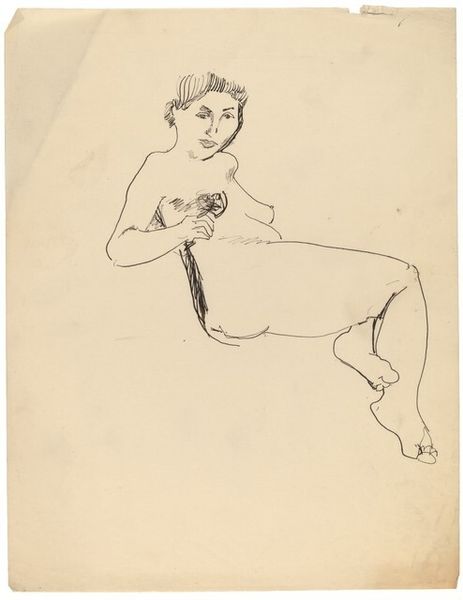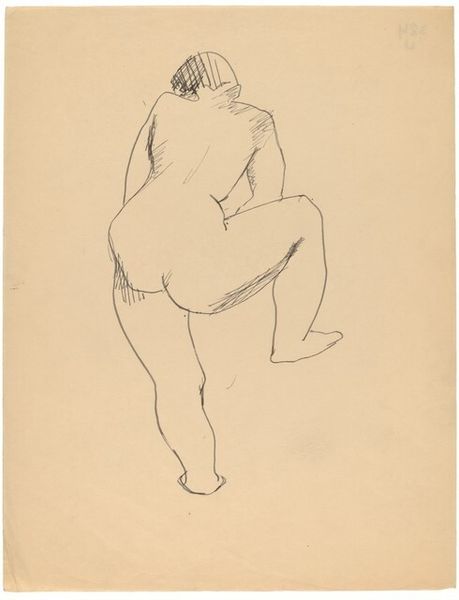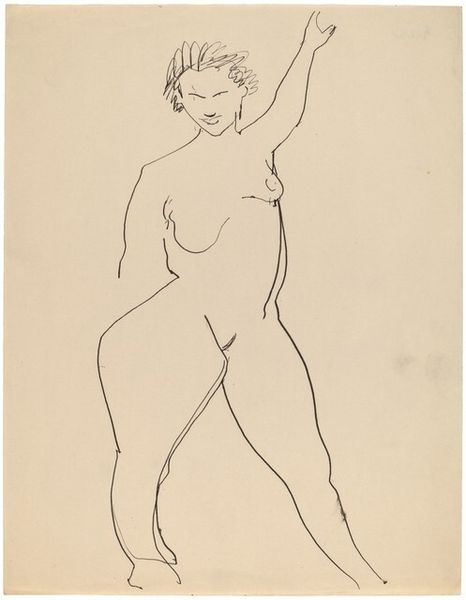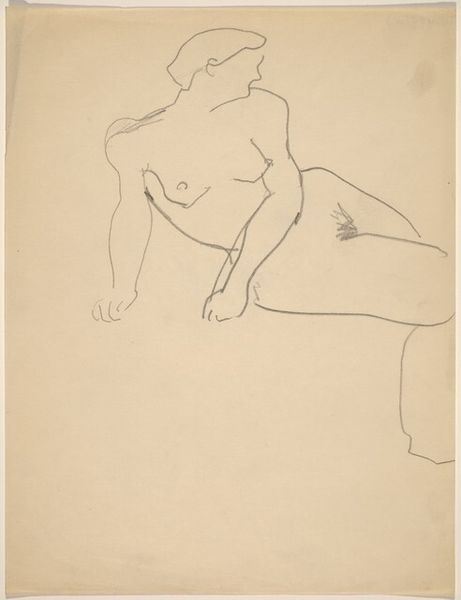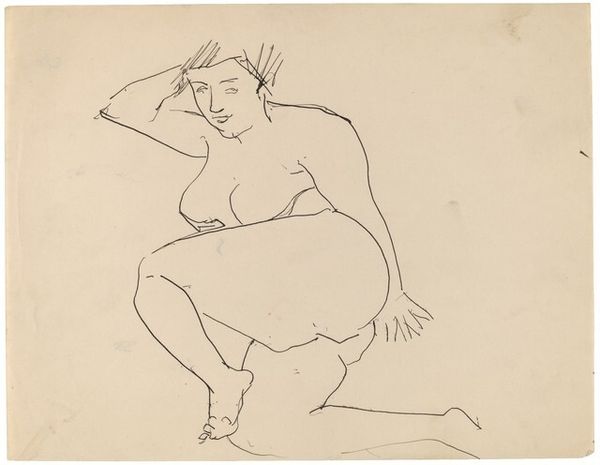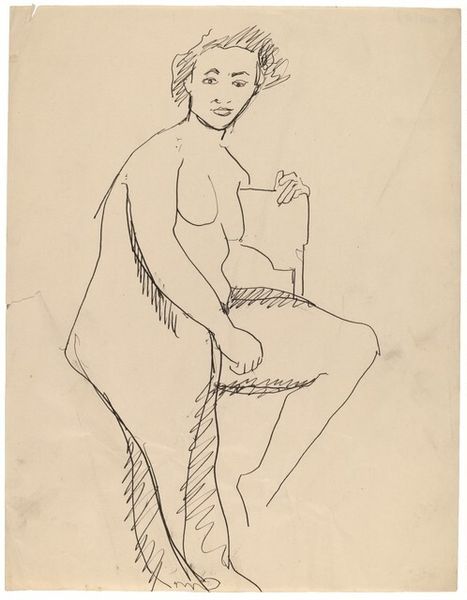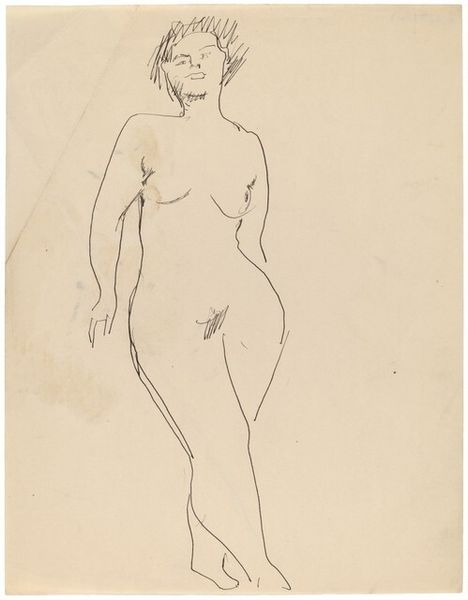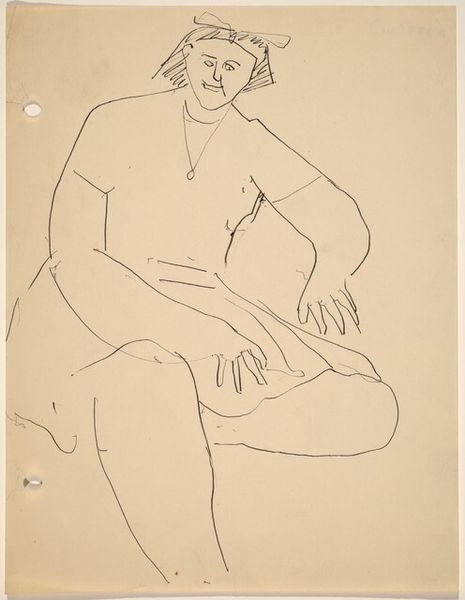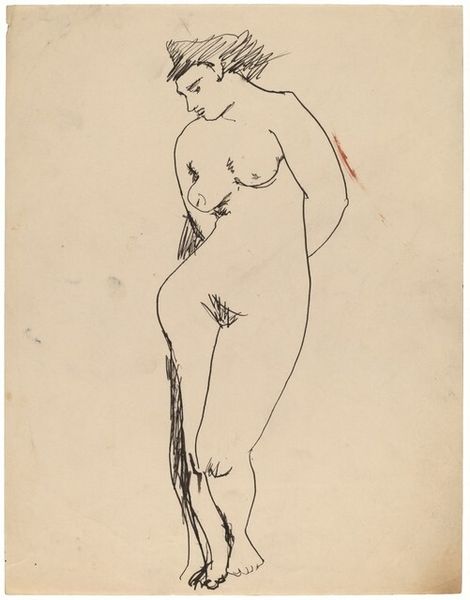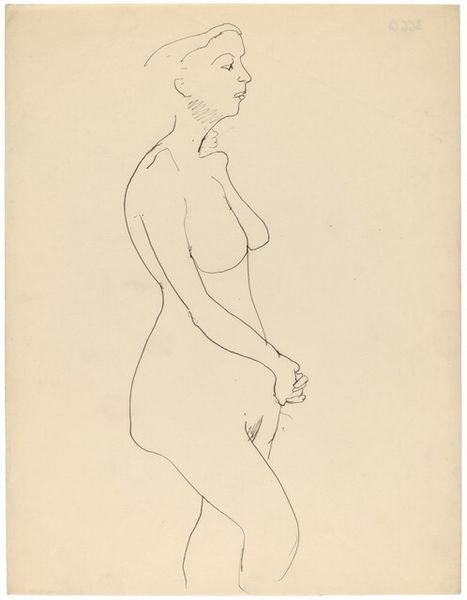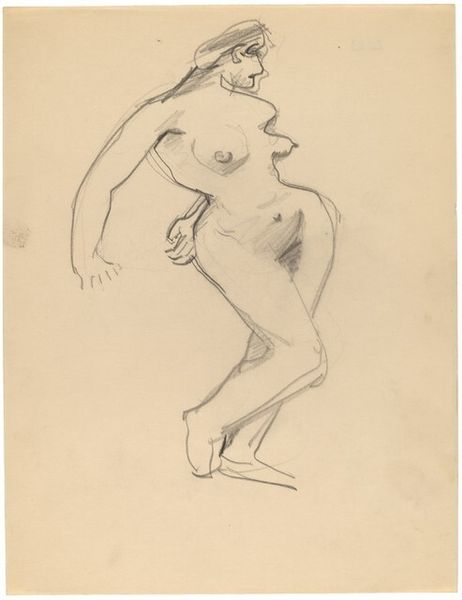
drawing, ink
#
portrait
#
drawing
#
ink drawing
#
pen sketch
#
figuration
#
ink
#
nude
Dimensions: overall: 27.7 x 21.4 cm (10 7/8 x 8 7/16 in.)
Copyright: National Gallery of Art: CC0 1.0
Curator: The pen sketch, “Seated Female Nude Leaning Back, Left Leg Raised at Knee” immediately strikes me as direct, vulnerable. The stark, almost clinical linework lays bare a form in repose, free from idealization. Editor: It does. The line seems less concerned with beauty and more focused on recording, almost cataloging, the body’s shapes and volumes. You sense this piece emerged quickly. I’m very interested to see that this is by Mark Rothko. Curator: Rothko is predominantly recognized for his abstract expressionist color field paintings. Yet, it’s pieces like this nude sketch that show an artist thinking through figuration, structure, weight, and form. This contrasts so starkly with what we expect of his later canvases, it's jarring but that shows his range, perhaps before abstraction fully claimed him. Editor: I agree, it serves as a powerful historical record. Knowing that Rothko, an artist known for intensely emotional color, also spent time rendering a traditional nude makes you rethink his engagement with art history itself. Did he see this academic approach as vital training, or was he already looking beyond it? I also wonder what was the public attitude to nude portraits at the time? Curator: Precisely. You almost see an underlying architecture beneath those later color fields, a ghost of classical training grounding even his most ethereal canvases. Look at the subject's expression. There's a self-assuredness, an unburdened presence. This connects it for me to historical goddess images and mythologies of a liberated female form. Editor: I’m not so sure I get a sense of liberation as a viewer, more of a clinical record. But I do think it makes you ponder the cultural assumptions about beauty, eroticism, and even art education itself in that time period. Seeing a work like this disrupts conventional understanding of Rothko and the context of early 20th-century American art. Curator: Ultimately, it gives me greater insight into his eventual shift toward pure emotion and spiritual experience—almost as if he deconstructed figuration entirely to expose the universal feelings it represents. Editor: Exactly, it really reframes how we look at not only his work but also the period itself. Curator: A powerful thing a simple line can do.
Comments
No comments
Be the first to comment and join the conversation on the ultimate creative platform.
